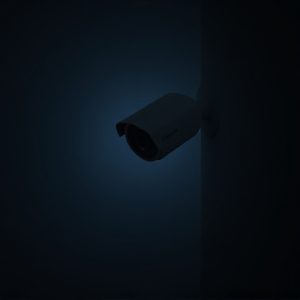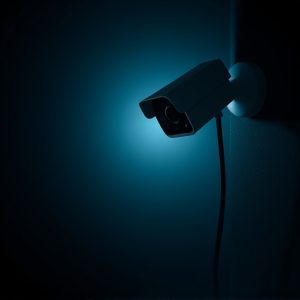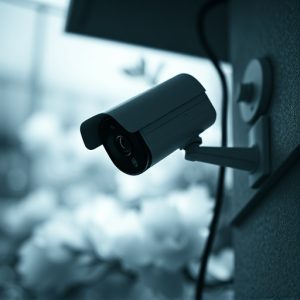Mastering Home Surveillance: A Guide to Hidden Security Cameras
When selecting a hidden security camera for your home, prioritize high-definition resolution, night…….
When selecting a hidden security camera for your home, prioritize high-definition resolution, night vision, and motion detection for effective monitoring. These discreet cameras, which can be camouflaged as everyday objects, offer unobtrusive surveillance that deters intruders by remaining undetected. Ensure they have reliable storage options, either onboard, expandable, or cloud-based, with secure data storage and remote access capabilities for real-time monitoring from your smartphone or computer. Consider the camera's power source and battery life to ensure continuous operation, especially in areas without easy access to power outlets. Strategic placement is key to covering important areas like entrances and hallways without creating blind spots. A robust DVR system that supports both local and cloud storage will help you maintain comprehensive coverage while adhering to privacy laws. Regular firmware updates are necessary for maintaining the security system's functionality and performance, and routine testing ensures your setup remains efficient. Remember to use hidden security cameras responsibly, following ethical guidelines and legal requirements to safeguard your home effectively.
Home spy cameras have become an integral part of modern home security, offering a blend of vigilance and discretion. This article delves into the nuances of hidden security cameras, exploring their role in safeguarding your residence. We will guide you through understanding these covert devices, highlighting their importance in a comprehensive manner. From selecting the right features for your needs to installing and monitoring them effectively, this piece offers a detailed framework for utilizing hidden security cameras to their full potential. Enhance your home’s safety with insights tailored for savvy homeowners keen on maintaining a secure living environment.
Understanding Hidden Security Cameras: A Comprehensive Guide
When integrating hidden security cameras into your home surveillance system, it’s crucial to consider their placement and capabilities. These discreet devices serve as silent sentinels, capturing footage without drawing attention to themselves, which is vital for deterring theft or monitoring sensitive areas within your residence. Hidden security cameras come in various forms, from tiny domes that blend into the ceiling to covertly placed wall outlets and even everyday household items like clocks or smoke detectors with built-in cameras. The key to effective home surveillance lies not only in their concealment but also in their resolution and recording functionality. Modern hidden cameras often feature high-definition video, motion detection, and remote access via smartphones or computers, allowing you to keep an eye on your property from anywhere at any time. When selecting a hidden security camera, prioritize models with clear imaging, ample storage options, and reliable connectivity to ensure comprehensive coverage and peace of mind. Additionally, ensure these devices are compliant with privacy laws and regulations, as surveillance without proper legal groundwork can lead to unintended legal complications. By carefully choosing and positioning hidden security cameras, you can create a robust defense against unwanted intrusions while maintaining the aesthetic integrity of your living spaces.
The Role of Discreet Cameras in Modern Home Surveillance Systems
In contemporary home surveillance, the integration of discreet cameras plays a pivotal role. These unobtrusive devices are meticulously designed to blend seamlessly with everyday household items, ensuring they remain undetected to potential intruders. A hidden security camera can be cleverly incorporated into objects like clocks, picture frames, or even common household plants. This subtlety is paramount in deterring theft, vandalism, and other malicious activities, as it eliminates the risk of a would-be thief disabling or removing the camera upon discovering its presence. The advantage of such covert surveillance is twofold: it protects the home and its inhabitants without compromising the aesthetics or functionality of the living space, and it provides homeowners with peace of mind, knowing their property is safeguarded by technology that remains invisible to the untrained eye. With advancements in miniaturization and artificial intelligence, hidden security cameras are now equipped with high-resolution video capture and motion detection capabilities, making them a robust component of modern home security systems.
Features to Consider When Selecting a Hidden Security Camera for Your Home
When selecting a hidden security camera for your home, it’s crucial to consider several key features that will ensure optimal protection and coverage. Firstly, the camera’s resolution is paramount; high-definition video allows for clearer images and better identification of individuals or activities within your home. Additionally, night vision capabilities are essential for 24/7 monitoring, enabling the camera to capture footage in low-light or dark environments with clarity. The camera should also be equipped with motion detection, which can trigger recording or alerts when movement is detected, ensuring you’re promptly informed of any activity.
Furthermore, consider the camera’s storage options; it should offer ample space for video footage or allow for external storage expansion. Some hidden cameras come with cloud storage solutions, which provide remote access and secure data storage. The camera’s battery life or power requirements are also significant factors, especially if placing the camera in a location where power outlets are scarce. Lastly, ensure the camera blends seamlessly into its surroundings to remain undetected by potential intruders. With these features in mind, you can select a hidden security camera that offers robust protection and peace of mind for your home.
Best Practices for Installing and Monitoring Hidden Security Cameras Effectively
When installing hidden security cameras in your home, strategic placement is key for capturing clear footage and deterring potential intruders. High-traffic areas like entrances, hallways, and common living spaces are prime locations for these discreet devices. Ensure that each camera’s field of view covers different angles to minimize blind spots. Use a variety of hidden security camera types, such as those designed to blend with smoke detectors or wall outlets, to maintain an inconspicuous surveillance setup. Additionally, opt for models equipped with motion-activated recording and night vision capabilities to monitor your home effectively, regardless of the time of day or the level of lighting.
For monitoring purposes, consider a reliable and secure digital video recorder (DVR) system that can store footage locally or through cloud services, depending on your preference for privacy and accessibility. Regularly update the firmware of your hidden security cameras to benefit from the latest security enhancements and troubleshoot any potential issues proactively. Furthermore, test your system frequently to ensure it’s functioning optimally and adjust camera angles as needed to maintain an effective surveillance network within your home. Remember to comply with local laws regarding surveillance and privacy, ensuring that you’re capturing footage ethically and legally.


